The two basic geometries for holograms are – transmission – where light is shone through the hologram, and – reflection – in which the hologram reflects light. The recording of transmission and reflection holograms were developed from two different fields of inquiry and have distinct optical aesthetics.
The reflection hologram was developed by Yuri Denisyuk3 (1927–2006) who used a single beam to both illuminate the object and be the reference. Denisyuk’s process follows the color and spatial photographic recording practices of Lippmann photography and Daguerreotypes, which were created on polished metal surfaces. Gabriel Lippmann (1845–1921) claimed to have invented a method of color photographic recording and provided a scientific explanation of how the emulsion structure recorded and then could reconstruct optical standing waves patterns, the particular wavelengths of which comprise a color image.
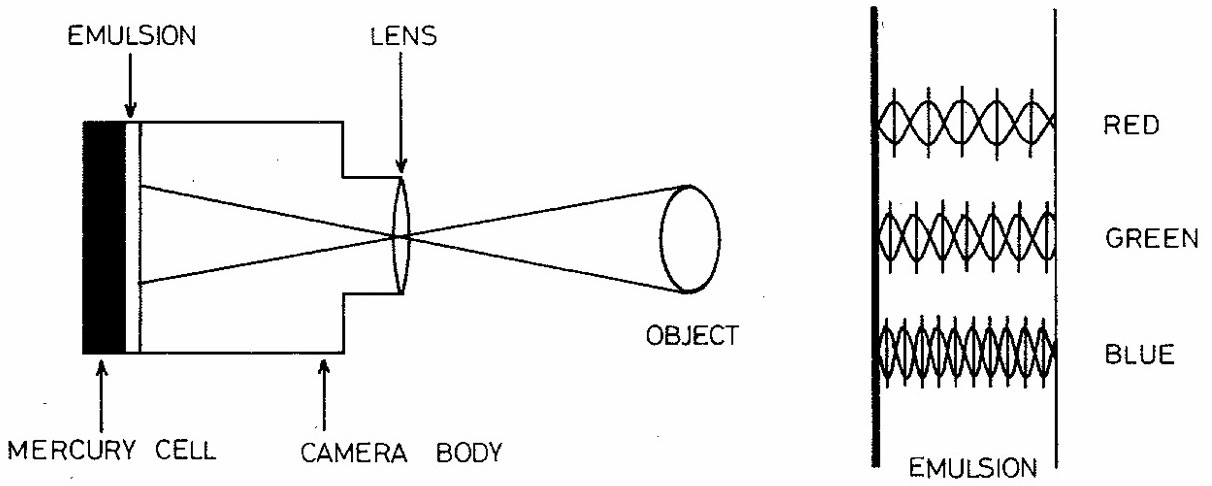
While Lippmann was the first to explain this process, later analysis has shown that his method of recording was similar to the Daguerreotype4. In both a Daguerreotype/Lippmann recording and the reflection hologram, the color of the image is selective, only being formed by the wavelengths that resonate with the spacing of the fringes.
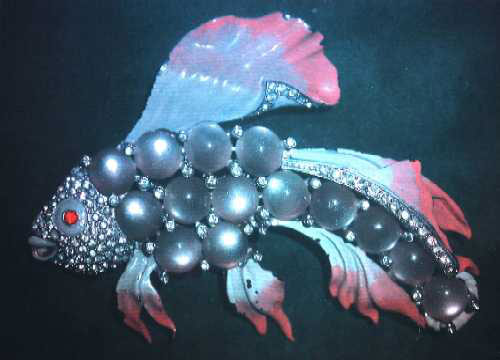
True colour (panchromatic) reflection hologram
Han Bjelkhagen is a scientist who has worked extensively
to improve the colour reproduction characteristics of holograms.
By using multiple color lasers a full color Denisyuk reflection hologram can be recorded and is almost indistinguishable from the original object. The tendency on encountering such an image is to check its authenticity – to look behind the plate for the object.

a) Original micrograph, 1.4 mm. diameter b) Micrograph, directly photographed c) Interference pattern, from obtained by projecting the micrograph onto a photographic plate with a beam diverging from apoint focus d) Reconstruction from interference pattern
(source Gabor, 1948)
The process of transmission holography developed from a series of scientific experiments and a developing understanding of the wave-nature of electro-magnetic radiation. In 1912 by Max von Laue demonstrated the diffraction of x-rays through a crystal lattice of copper sulfate. Experimental results were then formulated in 1913 by father and son, William Henry Bragg and William Lawrence Bragg, into Bragg’s law of diffraction (2dsin ? = n?), which equates the fringe spacing (d) to the angle of deflection (?) for any given wavelength (?)5. Using this relationship diffraction gratings can be made to control the angle of deflected light and separate different wavelengths of light.
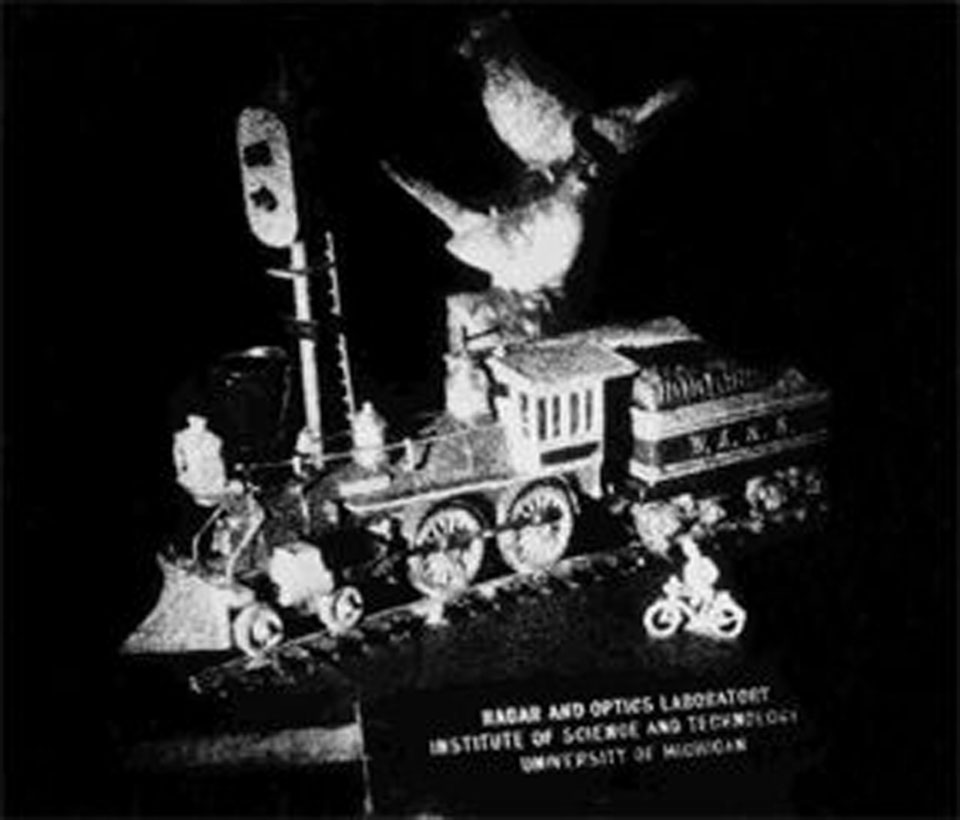
Laser-viewable transmission hologram
via: Holophile
The key step in the development of holographic imaging was the use of a reference beam to encode one wave by superimposing it with another (to record the interference pattern). This ‘double diffraction’ process was proposed by Denis Gabor in 1948 in an attempt to improve the design of the x-ray (electron) microscope. Gabor’s experiments were limited to optical-waves traveling close to the optical axis (paraxial rays) and hence when used for optical holography the reconstruction beam was co-incident with the image, and thus would shine directly into the viewer’s eyes.
Emmett Leith and Juris Upatnieks while working with side-reading radar developed the technique of off-axis optical holography in 1962. Their theory proved practically possible when they gained access to a laser in 1964 and produced a number of holograms. The potential of holography was recognised the moment these holograms were published, causing a flurry of research and Gabor’s awarding of the Noble Prize for Physics.
As transmission holograms diffract all of the illumination into the image, ‘mono-chromatic’ light (such as from a laser) is needed to reconstruct a sharp image. Stephen Benton developed transfer geometries that allowed transmission holographic prints to be viewed with a white light source; including the rainbow hologram in 1969 and using an achromatic geometry in 1977 to recombine the spectrum.

Center: Polaroid Patent Rainbow Hologram, 1975 | Rainbow hologram on film in card mount, 4.5” x 7” (11.4 x 17.8 cm)
Right: Stephen Benton, Herbert Mingace, Jr. and William Houde-Walter, The Bartlett Head (Aphrodite), 1978 | Achromatic white-light transmission hologram on glass, 13.5 x 12.5” (34.3 x 31.8 cm)

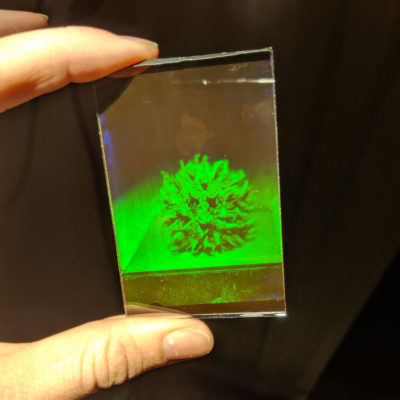 What is a Hologram?
What is a Hologram?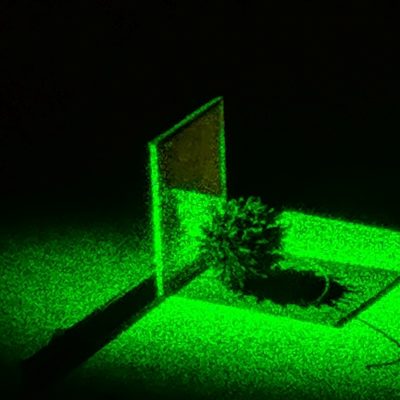 How are images recorded in a hologram?
How are images recorded in a hologram?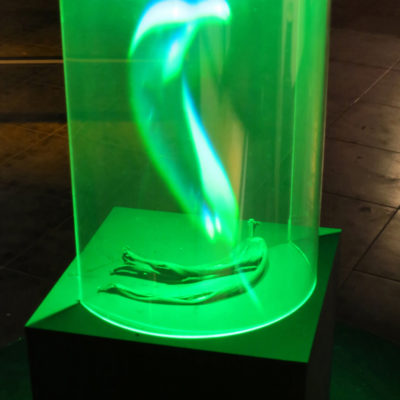 Different Types of Holograms
Different Types of Holograms Future History
Future History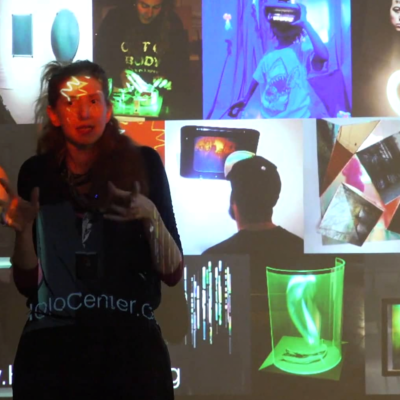 What is Holographic Art
What is Holographic Art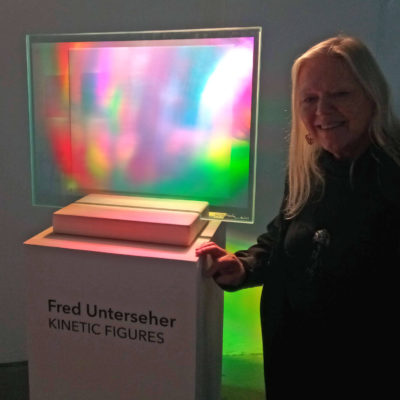 HoloSeminars
HoloSeminars